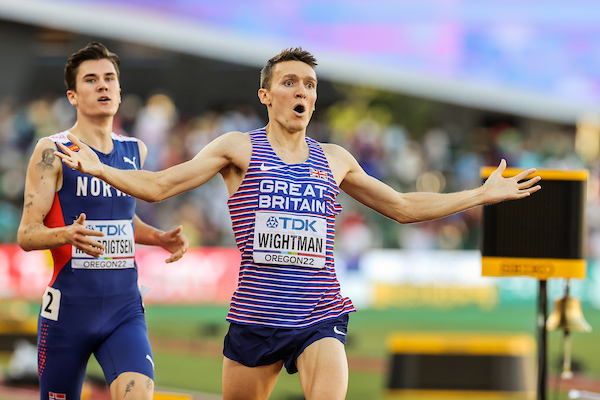This is Matt Long’s 4th piece for RunBlogRun on the art and science of coaching athletics. This is the third part of a three part series on the coaching of World Champion Jake Wightman.
JAKE WIGHTMAN- INCREASING THE PACE, by Matt Long
RelatedPosts
IN THE FINAL PIECE OF A TRILOGY, MATT LONG HAS A FRONT-ROW SEAT IN WATCHING GEOFF WIGHTMAN MOVE THROUGH THE COACHING GEARS
In the first of a three-part series, you will recall that we began to explore the coaching journey of Geoff Wightman, which saw his son Jake take the World 1500m title in Oregon back on 19th July last year. In part 2, we worked back to Jake’s junior career in exploring the type of sessions which moved him from a promising junior to an international athlete. You will remember we spoke about how ‘tired surges’ with a floating element were used as a specific form of ‘split interval’ training. This practice was contextualized with reference to the work of GA Brooks on the physiology of the ‘lactate shuttle’ and the coaching pedagogy of the Oregon-based Peter J. Thompson.
So let’s regress back two decades to look back at Jake Wightman, the boy.
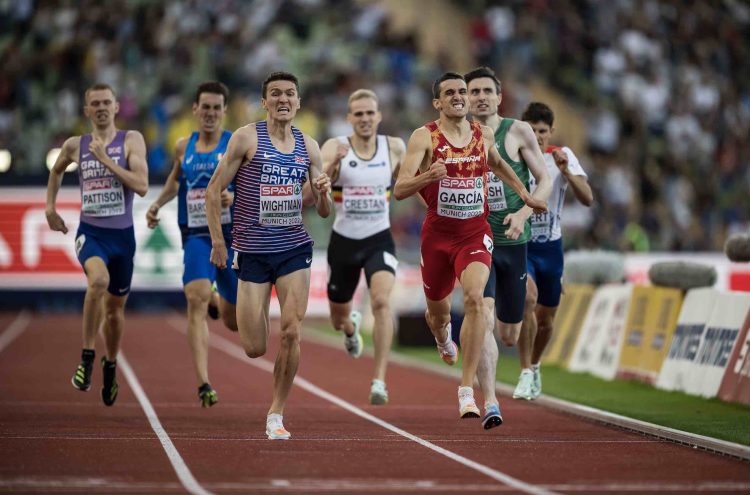
Sunday 16th March 2003
It’s a bitingly cold, wet, and windy half marathon in Bath as the announcer, Geoff Wightman, takes his place in the makeshift commentary box as the mini fun run which precedes the main event gets underway. A nervous nine-year-old Jake Wightman glances over to the watchful eye of his father as he embarks upon one of his very first fledgling athletic experiences outside of the comfort of his school cross-country fields. Midway through the race, tears fill Jake’s’ eyes as he slips and grazes his knee on one of the turns around the recreation grounds of Bath RFC. Spectators politely applaud him as he gets to his feet and soldiers on, but his misery is compounded as his twin brother Sam goes past him and disappears away off into the distance. Jake trudges home near the back of the field to disappear down a finishing funnel which leads many a disheartened youngster into obscurity. No one there that day would have believed they were witnessing a boy who would go on to become a World 1500m champion in Oregon 19 years later.
So let’s unpick Jake’s long-term athlete development:
Long-Term Athlete Development
Back in 2019, Geoff Wightman told me, “My wife Susan (nee Tooby- a former international athlete) coached Jake and his twin brother Sam up until they were almost 16 because she was a PE teacher at their school, Fettes College in Edinburgh. They did sport quite a lot each week, but Jake started to make some progress at running, even though he hadn’t really grown at that age. It was felt that he needed a bit more input and more regular training, so I took it on in 2010. For the next seven years, he was my only athlete. We got a lot of help with him joining in with other people’s groups, especially Eric Fisher, Sandy Cameron, and John Lees at Edinburgh AC and George Gandy at Loughborough. I learned a lot from them and also the other coaches that I encountered in my work at Scottish Athletics and UK Athletics, including sprints, jumps, and throws coaches”.
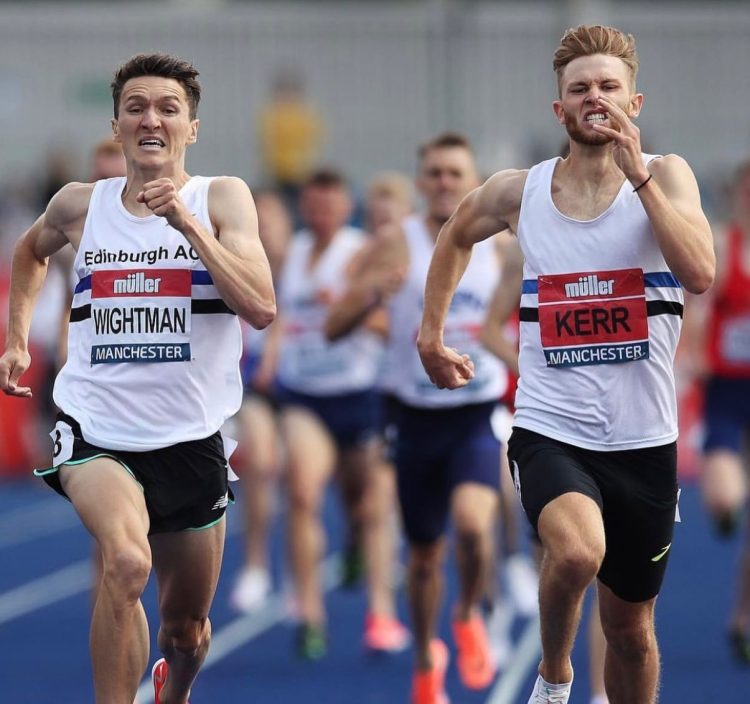
What is significant about the above is that Wightman junior will have been exposed to a range of sports at a young age, all of which will have helped what coaches tend to refer to as ‘ABCs’- namely Agility, Balance, and Co-Ordination. Secondly, the fact that Wightman senior alludes to learning from sprints, jumps, and throws coaches means that rather than specializing as an endurance athlete at a very young age, his son will have made the most of the ‘windows of opportunity’ for speed and strength development through things like speed drills, plyometrics, and body weight exercises.
Multi-paced training
Wightman senior readily admits to being heavily influenced by the work of the late founder of the British Milers’ Club, Frank Horwill. In his classic text Obsession for Running (1991), the charismatic coach formulated his notion of multi-tier training through the 5 paced system, which was most famously utilized by double Olympic 1500m champion Sebastian Coe. Guided by his father Peter, Sebastian would effect sessions over a microcycle of training which were at 1500m race pace but sometimes over distance in terms of being completed at 3,000m and 5,000m pace and also under-distance, namely at 800m and down to 400m pace.
Speaking to a British Milers’ Cub coaching audience in the last few months, Geoff Wightman asserted that, “Every race is won by the athlete who changes pace the best.” So Wightman adapted the philosophy engendered by Horwill and Coe senior by figuring that multi-paced training could be effected within a single session and ultimately within a single interval rather than something which needed to be formulaically spread over a set number of days within a microcycle.
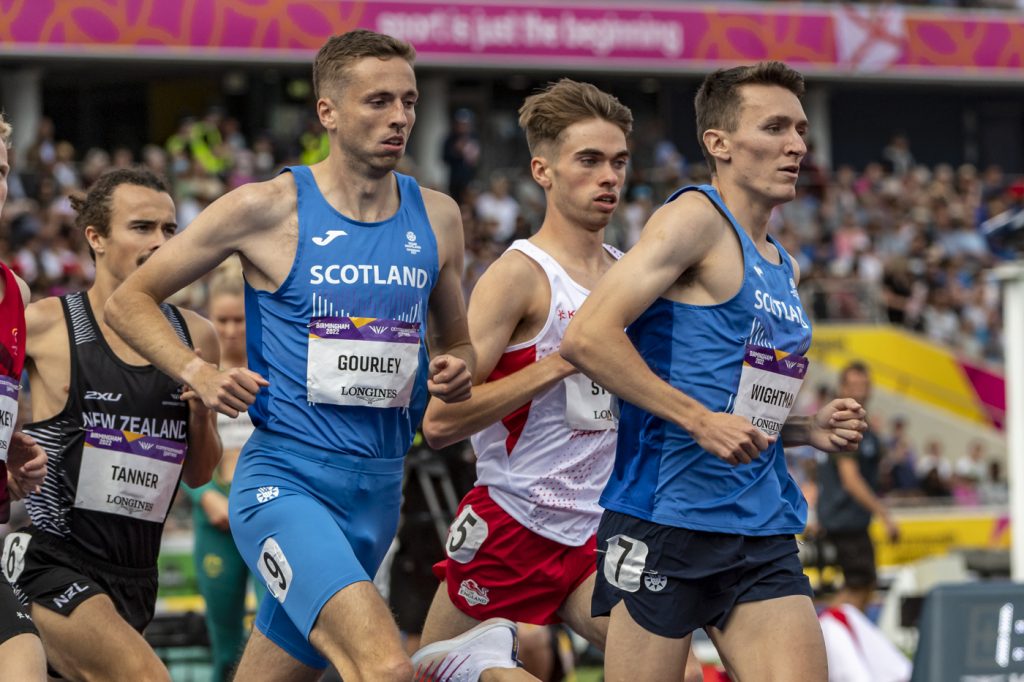
Copyright Bobby Gavin
Wightman senior offered the example of standard 5 x 1200m (off 400m jog recovery), which was run at an even pace. Rather than trying to immediately effect a ‘split interval’ with a floating element, his first suggested intervention, which could be used for a developing event group endurance athlete, could be what Dave Sunderland in High-Performance Middle Distance Running (2005) would have termed a ‘pace increaser.’ So the 5 x 1200m could be run with each of the three laps getting incrementally quicker, say from 78s on lap 1, to 76s on lap 2 to 74s on lap 3.
When the young athlete has achieved progressive overload and habituated to the above, Wightman senior suggested he or she could then retain the principle of the ‘pace increaser’ on each lap but could aim to get the cumulative time for each of the 5 intervals progressively quicker. So, for example, the first set could be run at 84s for lap 1, 82s for lap 2, and 80s for lap 3, producing a cumulative clocking of 4m06s. At the other end of the spectrum, if the 5th interval were run at 74s for lap 1, 72s for lap 2, and 70s for lap 3, this would result in a cumulative clocking of 3m36s.
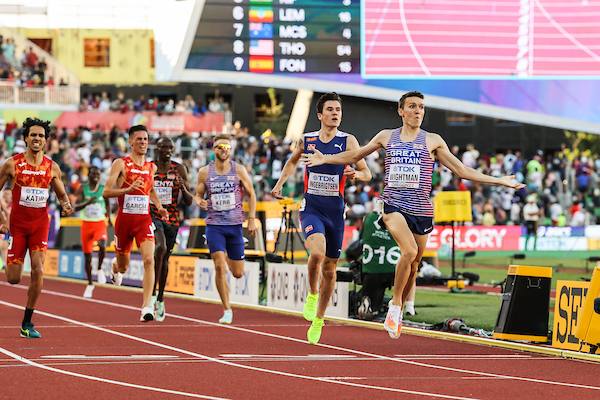
Eugene, Oregon, USA
July15-26, 2022
1500 meter final, Wightman, GBR, New Balance, photo by Kevin Morris
We are most certainly not suggesting that young athletes should affect 5 x1200m. The session and the splits fabricated above are merely for illustrative purposes. It’s the underlying principles of the session that we are trying to inculcate, and they are as follows.
Principles
Even-paced running is most associated with running a PR and does have a place in interval training. This being said, even paced running, by definition, cannot inculcate a change of pace with the said athlete. The young endurance athlete needs to learn to be able to change paces within a session, so they habituate their bodies to run at a range of aerobically dominant paces and are thus not ‘locked’ into one pace. The notion of the ‘pace increaser’ is a good way of beginning to get the young athlete to move through the proverbial gears, and when this has been inculcated over a mesocycle of training, further progressive overload can appropriately be introduced by retaining this principle and by adding the second variable of the increasing pace of the intervals as a cumulative. It would be highly risky for the coach to attempt to immediately jump from even-paced intervals to changing two variables- hence the ‘pace increaser’ serves as a bridge to making the second inter-related intervention- what we can term the ‘cumulative pace increaser’.
This leaves us with the following questions for self-reflection:
Questions for self-reflection:
- How many of my sessions are affected at an even pace?
- What proportion of my training involves some kind of differential pacing component?
- Why might it be suitable for me to build a ‘pace increaser’ element into my interval work?
- When might it be appropriate to retain a ‘pace increaser’ element in my work but to also introduce a second variable of a ‘cumulative pace increaser’ with each interval getting progressively faster?
Matt Long has coached a world champion in athletics and served as an England Team Coach @ the 2022 Commonwealth Games Development Camp. He welcomes contact for advice through mattlongcoach@gmail.com
“That’s my boy,” Geoff Wightman on the training of Jake Wightman, Part 1: https://www.runblogrun.com/2022/12/thats-my-boy-the-coaching-of-jake-wightman-2022-world-champion-at-1500-meters.html, by Matt Long
Jake Wightman, Training, part 2: https://www.runblogrun.com/2023/02/jake-wightman-from-boy-to-man-matt-long-comments-on-how-geoff-wightman-coached-jake-wightman-2022-world-champion-1500-meters-part-2.html, by Matt Long.

